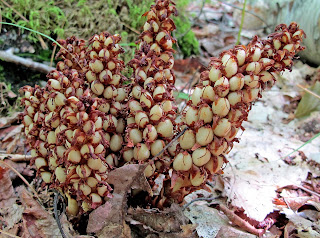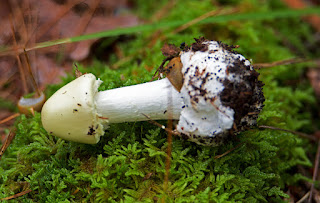NATURE MONCTON INFORMATION LINE, August
31, 2021 (Tuesday)
To respond by e-mail, please address your message to the information line editor, nelsonpoirier435@gmail.com .
Please advise the editor at nelsonpoirier435@gmail.com if any
errors are noted in wording or photo labelling.
For more information on Nature Moncton, check the website at www.naturemoncton.com .
Edited by: Nelson Poirier nelsonpoirier435@gmail.com
Info Line # 506-384-6397 (384-NEWS)
**Tonight, is the last of the
successful series of Nature Moncton Tuesday night outings with Mother
Nature’s weather forecast to cooperate beautify. It is looking like a don’t
miss outing. All details and directions are attached below:
Tuesday
Evening Outing. August 31., 2021
This week’s
outing will be the last of this season. We hope you have enjoyed them and would
be interested in hearing suggestions for improvements and possible locations
for next year.
We will be
meeting at 31 Rockland No. 1 Road, Taylor Village (instructions to follow) to
start a walk at 6:30 PM. We will begin
the walk through an area that nature is working at reclaiming then follow along
the Memramcook River for about a kilometer to a Ducks Unlimited Pond. The
walking surface will be mostly grass or an old roadway. Some of the things we may see include
Aboiteau, dykes, a wide range of flora, various hawks, Bald eagles, Shore
birds, Marsh birds and ducks, Muskrat, Mink, Weasel, Beaver, White tailed deer
and a million or so small birds. We hope you can make it.
To get to
the event ….. https://goo.gl/maps/tLLMVBBzvG2a1KJ7A
Moncton
NB
From Main St/NB-106 E
Continue
to follow NB-106 E
1.8 km
Slight right onto Acadie Ave/NB-106
E
Continue
to follow NB-106 E
18.2 km
Turn right onto Central St
3.1 km
Just past the
Irving
Stay left on Central St
4.6 km
Turn left onto Rockland No1 Rd
Destination
will be on the left
950 m
31 Rockland No1 Rd
Taylor Village, NB E4K 2R1
**Brian Stone took some plant and
mushroom photos on his recent visit to Kejimkujik
National Park in N.S.
One of those included BONESET which shows the
opposite leaves clasping each other to help separate it from other similar
species. This plant gets its name from the old Doctrine of Signatures that
suggested to folks at the time the leaf arrangement suggested it would be
useful in treating bone fractures and was used for that as a dressing. We may
look on this as strange today, but it was a time when medicine was indeed in
its infancy
Brian also photographed an Amanita mushroom
species. He carefully exposed the bulbous base (universal veil remnant) that is
an amanita species field mark that is not noted unless dug around and exposed.
This may be the very toxic DESTROYING ANGEL but cannot be sure from the
photo as the partial veil is not exposed yet.
A 3rd interesting plant Brian photographed
was SQUAWROOT which had several of us wondering on its identification as
it is late in the season for it and is passing its prime. I am attaching a few
photos I took of this plant earlier in the season (also at Kejimkujik National
Park in N.S.) on July 13, 2011, that
shows it in an earlier stage. The reason we are supplying extra information on
Squawroot is that at the moment, it has only been found in NS and not NB so
reason to be on the lookout for it in NB. Gart Bishop has done some literature
review of this interesting plant which is too good not to share so will quote
Gart’s findings below:
Quoting Gart’s findings:
“ In the Flora of NS is says "is parasitic on the
roots of several types of tree”. Its unbranched stems are stout and
completely hidden by large, overlapping leaf scales. These are oval, thick,
and fleshy, and up to 2 cm long. Flowers are restricted to the top half
of the plant in a densely clustered spike with bracts. It flowers from
April to July, is associated with oaks and other deciduous trees.] It is known
only from the Kejimkujik area. It is rare (S1S2) in Nova Scotia and
absent in New Brunswick. The root is parasitic on the roots of oaks
trees. While it is found in every state east of the Mississippi, and Ontario,
Quebec and Nova Scotia, it is uncommon. The following is taken from Pen
State University web page: https://www.dept.psu.edu/nkbiology/naturetrail/speciespages/squawroot.html
“Squawroot is a
non-photosynthetic plant that relies on a parasitic connection to the roots of
host trees (most species of oak and also beech) for its nourishment. It is a perennial
that lives up to ten years. Most of the plants biomass is found underground.
The cone-like structures that we see are its small, specialized, flowering
stems.
Squawroot
is more common in older forests, and its presence and relative abundance in a
site may be significant indicators of forest age and stability. In areas where
oak forests are being replaced by secondary forests that are dominated by
maples or other non-oak tree species, squawroot is an increasingly uncommon and
possibly threatened plant.
It
is not clear in the literature if Squawroot seriously compromises the health of
its host tree. It is likely that it, by itself, may exist in a very stable
parasite host symbiosis with its much larger and longer-lived host oak or beech
tree. But, if other stresses combine with squawroot’s presence, the health and
vitality of the host tree may be reduced.
Life
cycle
A
squawroot seedling grows underground for approximately four years. During this
time the roots of the seedling attach to the roots of its host tree forming
large, swollen knobs (possibly the source of the name “cancer root”). At four
years, the plant sends up its scaly, flowering stems. Yellow to cream-colored
flowers develop on these stems. These flowers produce a scent that has been variously
described as something between carrion and cabbage. Flies and bumblebees are
the primary pollinators of squawroot.
Uses
by Other Animals
Both
the seeds and the aging stalks are consumed by many mammals including
white-tailed deer and black bear (hence the name “bear cone”). The seeds are
widely dispersed in the feces of these mammals.
Squawroot
can be consumed both as a food and as a folk medicine. The above ground stalks
may be eaten directly or dried to brew teas. The plant has astringent
properties and estrogen-like activities. It was used by Native Americans to
treat menopause symptoms, bleeding in the bowel and uterus, and headaches.”
Maybe
more that most folks want to know but a very interesting plant and who will be
the first to find it in NB!
Nelson
Poirier
Nature
Moncton







